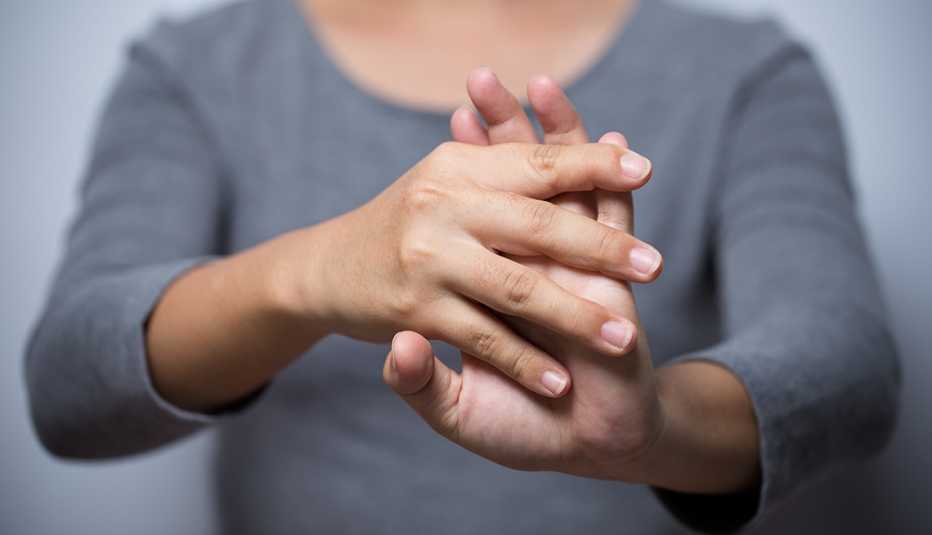Staying Fit
Aching elbow? Crackly knees? Hurting hip? You’re not alone.
About 70 percent of adults age 50 and older experience joint pain at least occasionally, and 60 percent have been told they have some form of arthritis, according to a recent report from the University of Michigan National Poll on Healthy Aging, supported by AARP. More than 32.5 million U.S. adults have the most common form of arthritis, known as osteoarthritis.


AARP Membership— $12 for your first year when you sign up for Automatic Renewal
Get instant access to members-only products and hundreds of discounts, a free second membership, and a subscription to AARP the Magazine.
When it comes to managing this pain, many adults are taking matters into their own hands, testing out acupuncture and massage, the poll found. Others are popping pain relievers, swallowing supplements, even seeking experimental therapies.
Beth Wallace, an assistant professor in internal medicine at the University of Michigan and a rheumatologist at the VA Ann Arbor Healthcare Center, says if joint pain is getting in the way of your everyday life, you don’t have to go at it alone. “Don’t hesitate to talk to your doctor, especially if you’re taking medications to help manage it,” she says. “Even over-the-counter medications can have risks.”
Another reason to consult a doctor: Given the plethora of treatments available for joint pain, some of which don’t work or might not work for you, “it is our job to synthesize the evidence and the science that’s out there,” says Karl Koenig, an orthopedic surgeon and executive director of the Musculoskeletal Institute at UT Health Austin.
Just know there is no cure for osteoarthritis, which occurs when the joint cartilage between bones breaks down, and there’s nothing that can stop the process once it has started. “It’s a natural wear and tear phenomenon from living in a world with gravity,” says Robert Sterling, chair of the Department of Orthopaedic Surgery at the George Washington University School of Medicine and Health Sciences.
But there are things that can help to mitigate pain from osteoarthritis. Here are some joint pain treatments older adults are trying, according to the National Poll on Healthy Aging, and the evidence behind them.
Exercise
Physical activity is an effective strategy
It may sound counterintuitive, but moving your body can help alleviate some of the pain, stiffness and swelling you feel before, during or after physical activity.
Acupuncture and massage
Some joint pain sufferers are trying alternative therapies for relief. The National Poll on Healthy Aging found:
- 26 percent use massage
- 5 percent use acupuncture or acupressure
What the science says: While studies haven’t overwhelmingly confirmed the benefits of these therapies for joint pain reduction, expert groups say the risks of harm are minor.
“People often think if it hurts, I shouldn’t move,” Koenig says. With osteoarthritis pain, however, it’s the opposite. “The nutrition of the cartilage is actually driven by the fluid in the joint, and so by moving, you’re actually providing nutrition to the remaining cartilage that’s there and you prevent some of the stiffness that goes on,” he explains.
People with arthritis pain also tend to have some associated weakness in the muscles around the affected joint, Sterling says. Doing a supervised exercise program like physical therapy has been shown to improve arthritis symptoms, he adds.
Further, exercise helps keep your weight down, which is another important factor in controlling osteoarthritis pain. Studies have shown that every 1 pound of body weight you lose takes 4 pounds of force off the knee, says Sean S. Rajaee, an adult reconstruction and joint replacement surgeon at Cedars-Sinai Medical Center in Los Angeles.
“If someone were to lose 5 or 10 pounds, that’s taking up to 20 or 40 pounds off their knee, and if they’re taking 5,000 steps or 10,000 steps a day, that’s a lot of potential protection that you’d get from a little bit of weight loss,” Rajaee says.
The American College of Rheumatology recommends exercises like cycling, tai chi and yoga, in addition to strength and balance work. If you’re still experiencing some discomfort, Sterling says wearing a brace or splint over the affected joint can help. Likewise, a cane can provide support for people with pain in their knee or hip.
No need to spend extra money on a brace lined with copper, says Wallace, who is an author on the joint pain poll. There’s no evidence to support that the metal, sometimes marketed as a helpful tool for arthritis, has any pain-relieving properties.
The National Poll on Healthy Aging found that while most joint-pain sufferers exercise (64 percent) and a smaller share do physical therapy (24 percent), far fewer opt for nondrug options such as splints and braces (13 percent).







































































